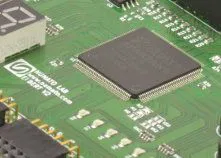Table of Contents:
The independent Artillery brand was established in 2018. Now their 3D printing solutions are being exported to over 80 countries worldwide. We are watching its persistent walk towards becoming one of the main 3D printer brands hoping it is about to make a blockbuster jump to the top. Artillery 3D printers are 95% assembled – all you need to do order them at Botland store, connect few parts and calibrate them.
Artillery Hornet
A true hornet in vivid black and yellow with a satisfactory FDM working area of 220 x 220 x 250 mm. Inspired by the body shape of Hornet cars, it is a combination of classic and modern. The printer is nearly fully assembled, and final assembly of the integral structure with metal profile and durable aluminium base takes up to several minutes. A modular Titan extruder has been used for higher quality printing – extrusion is solid and the filament feeding stays stable. The modular hotend head integrates brass nozzles in their joint operation.
Innovative cables
The increasingly popular trend of better organisation of cables is also present in the Artillery Hornet. An integrated system of cables for power supply, communication of electronics with the hotend and feeding the filament with a Bowden tube is a compact solution, which will not only keep the workspace tidy, but also ensure multifunctionality and durability for long-term use.
Inverted axis
Reverse, single Z-axis with a patented Z-joint, ensures smooth movement during printing. Thanks to it we can avoid problems with applying subsequent layers.
The stable V-shaped pulleys used in the Artillery Hornet design increase the printer’s stability and precision.
In addition, a reinforced table work surface, a powerful 350W power supply and a 32-bit low-noise motherboard with stepper motor drivers. Detailed technical documentation can be found on the product page – let’s move on to the next printer.
Artillery Genius
In FDM technology. The working area is exactly the same as the Hornet – 220 x 220 x 250 mm. Artillery Genius is equipped with a filament sensor informing of running out of print material and end induction sensors. The common feature of all three is not only fast, maximally several minutes assembly from prefabricated elements, but also quiet main board, because it was not missing in this model either. The lower price of Genius in relation to the Sidewinder, described in a moment, results from the difference in the working area, so the printers differ in general design and working area. Apart from that, the anatomy of the printers is similar.
Artillery Sidewinder X-1
Sidewinder also operates on the basis of FDM technology. It uses the Direct Drive system to transport the filament. The working area here is larger than that of its predecessor, as it measures 300 x 300 x 400 mm. Roughly saying a larger Artillery Genius. The Sidewinder-X1 has a number of improvements to make the user’s work easier – these include a filament sensor, a power failure detection function, limit sensors and a motherboard with low-noise stepper motor drivers. The whole thing relies on a metal construction with dimensions of 550 x 405 x 640 mm. In addition, on top of the Artillery Sidewinder-X1 frame, there is a holder for a spool of filament. Here, too, the assembly will neither surprise nor tire us – partially assembled elements will be put together in a few or several minutes tops.
Direct Drive extruder
An alternative to the Bowden extruder. Direct Drive is a filament transport system where the extruder is connected to a hotend printhead – in the case of Sidewinder it is packed with Volcano nozzles. This solution provides great support especially when working with flexible filaments.
Fault detection
Keeping an eye on a print run is quite a thankless task. The course of the process can be varied. Sidewinder takes care of it for us – we have a filament sensor informing us about the ending of the material and a power failure detection system. We can manually resume work with it after the power supply is restored.
Let’s sum it up: each of the three Artillery models is a solid pillar of home 3D printing.
How useful was this post?
Click on a star to rate it!
Average rating 5 / 5. Vote count: 1
No votes so far! Be the first to rate this post.


























